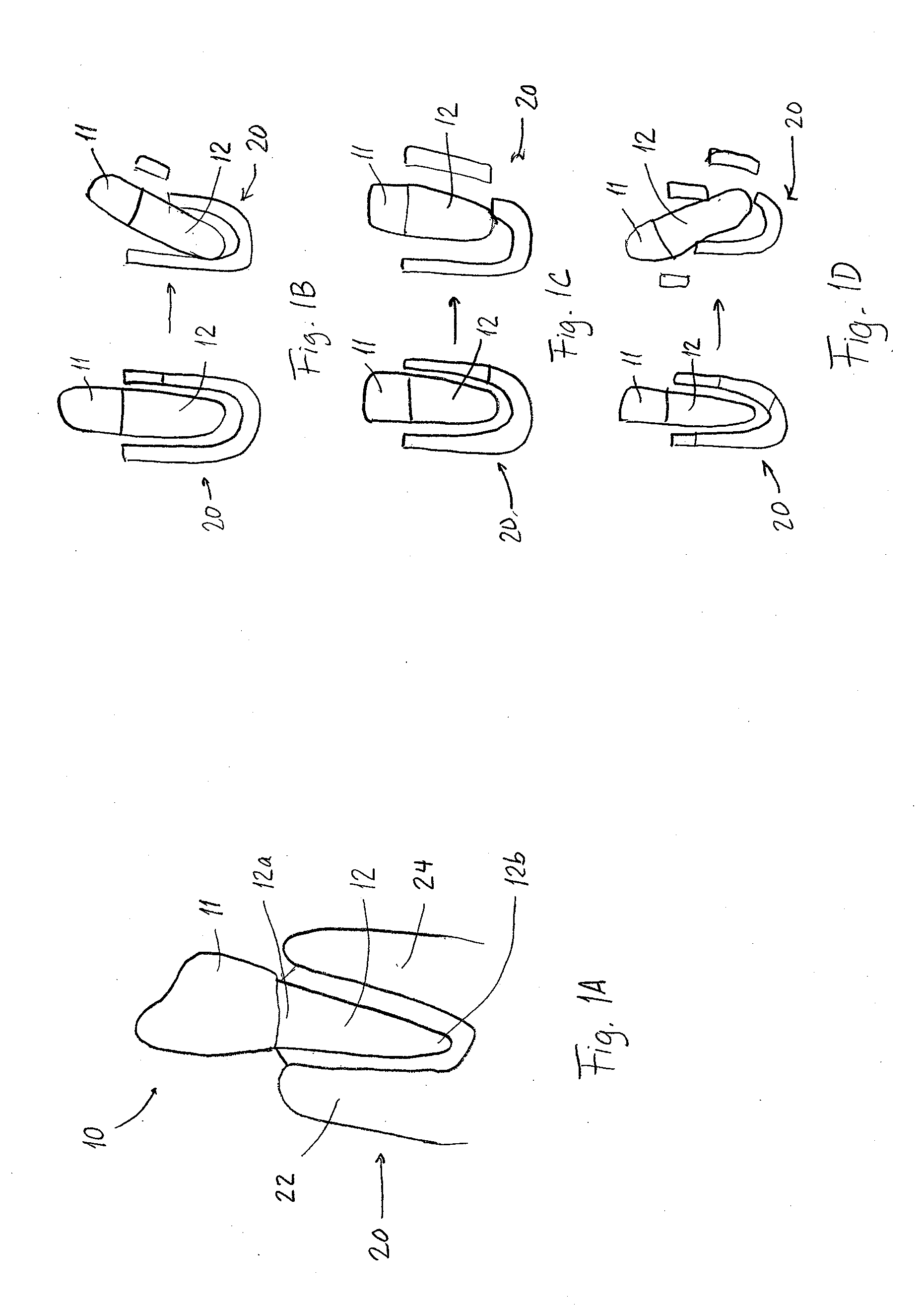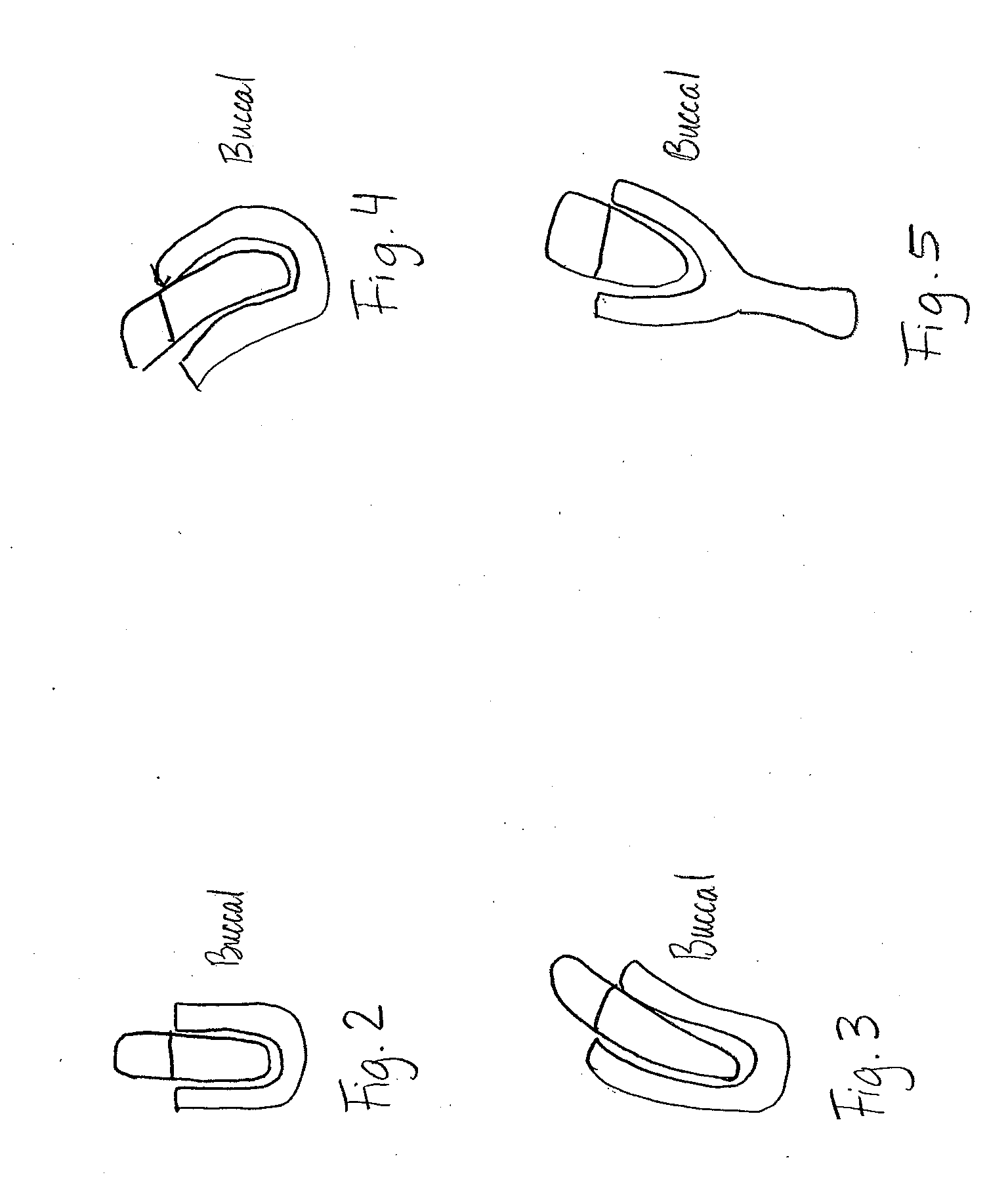Orthodontic Treatment Integrating Optical Scanning and CT Scan Data
a computed tomography and optical scanning technology, applied in tomography, instruments, applications, etc., can solve problems such as gingival recession and mucogingival defects, affecting the health of teeth, and affecting the treatment effect of orthodontic treatment, so as to avoid periodontal defects
- Summary
- Abstract
- Description
- Claims
- Application Information
AI Technical Summary
Benefits of technology
Problems solved by technology
Method used
Image
Examples
Embodiment Construction
[0048]According to an embodiment of the present invention, a combined scan data showing both a dentition and underlying bone and root structures is created by integrating CT scan data and optical scan data. The integration may be accomplished by one of the following three methods.
[0049]According to a first method of the present invention shown in FIG. 14A, an optical scan of the teeth 1400 and a CT scan of the patient is made 1402 and a superimposition and registration with a 3-dimensional (3D) volume rendering of the dentition based on matching of selected surfaces of the teeth 1404 to produce an artifact corrected image. This is less difficult when there are no dental restorations in the teeth that could create scatter artifact. It may be necessary to use a dental appliance such as an orthodontic bracket as disclosed in U.S. patent application Ser. No. 13 / 299,269, which can be scanned by both CT and optical scan to allow registration of the two datasets, as it contains a radiograp...
PUM
 Login to View More
Login to View More Abstract
Description
Claims
Application Information
 Login to View More
Login to View More - R&D
- Intellectual Property
- Life Sciences
- Materials
- Tech Scout
- Unparalleled Data Quality
- Higher Quality Content
- 60% Fewer Hallucinations
Browse by: Latest US Patents, China's latest patents, Technical Efficacy Thesaurus, Application Domain, Technology Topic, Popular Technical Reports.
© 2025 PatSnap. All rights reserved.Legal|Privacy policy|Modern Slavery Act Transparency Statement|Sitemap|About US| Contact US: help@patsnap.com



